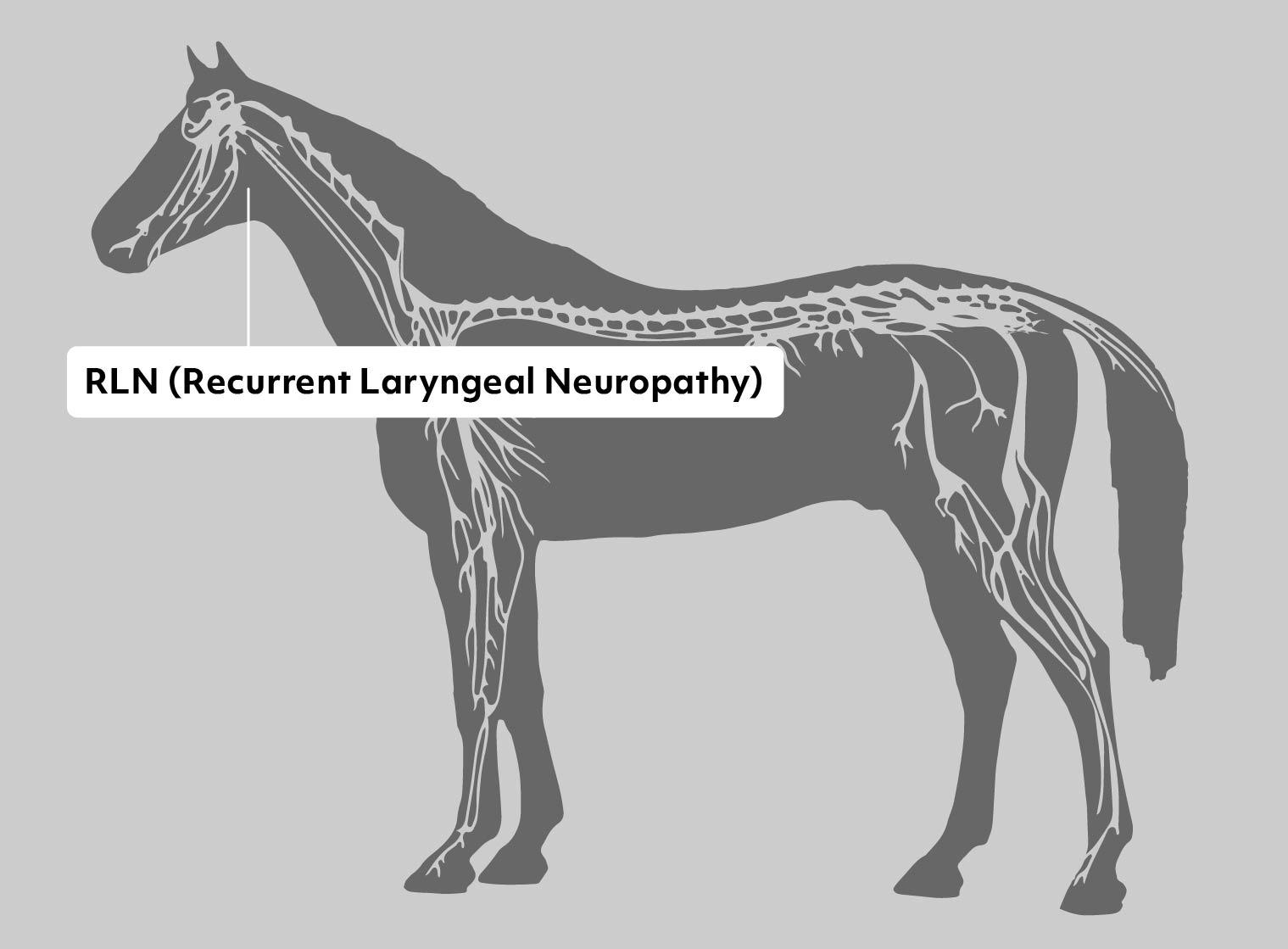Recurrent Laryngeal Neuropathy (RLN)
Gene or Region: ECA3
Reference Variant: T
Mutant Variant: C
Affected Breeds: Many
Research Confidence: High - Strong correlation in larger studies
Explanation of Results: RLN/RLN = homozygous for Recurrent Laryngeal Neuropathy Risk, ~12x higher risk than n/n RLN/n = heterozygous for Recurrent Laryngeal Neuropathy Risk, ~5x higher risk than n/n n/n = no variant detected
General Information for Recurrent Laryngeal Neuropathy
Recurrent Laryngeal Neuropathy (RLN) commonly called "Roaring" is a disease that results in loss of the neurons that open the larynx. Although we do not know what causes RLN, it significantly affects performance in Thoroughbreds and other sport horses. In technical terms, RLN represents a distal axonopathy of the recurrent laryngeal nerves, which is tpically expressed only on the left side of the larynx (the left nerve is the longest nerve in horses). RLN is also a mononeuropathy, as other peripheral nerves of the horse remain unaffected. RLN is an important issue for horses in competitive events, because the resultant paralysis of the larynx leads to obstruction of air flow during intense exercise. This obstruction creates the abnormal inspiratory noise that gives RLN its common name: “roaring.” Horses with RLN cannot breath normally at speed and as a result don't perform to their full potential. RLN has particular economic importance in Thoroughbred racehorses because these animals enter race training as 2-year-olds. Even though many thoroughbred horses sold at auction are endoscopically examined for evidence of RLN, the condition tends to develop with age, and may not yet be clinically evident in young animals.
A genetic contribution to the pathogenesis of RLN was previously suggested by the higher prevalence of the condition in offspring of RLN-affected than unaffected stallions. A 2014 study concluded that geldings are at higher risk than mares or stallions, and noted association to a site in the genome that also contributes to height.
References
Boyko et al., “Genomic analysis establishes correlation between growth and laryngeal neuropathy in Thoroughbreds.” (2014) BMC Genomics. 15:259. PMID: 24707981
Figure 1 from: “Equine Welfare during Exercise: An Evaluation of Breathing, Breathlessness and Bridles”, Mellor and Beausoleil, Animals 2017, 7(6), 41; doi:10.3390/ani7060041
More Horse Health
Foal Immunodeficiency Syndrome
Foal immunodeficiency syndrome (FIS) is a failure in the development of the adaptive immune system. At 3-6 weeks of age, once the maternal antibodies begin to degrade, foals exhibit signs of anemia, diarrhea, and pneumonia. As these foals fail to respond to treatment for infections, they are humanely euthanized at a young age.
Glanzmann Thrombasthenia
Glanzmann Thrombasthenia (GT) is a blood platelet function disorder, resulting from a reduction in the platelet fibrinogen receptor protein. Clinical signs can be characterized by bleeding on the skin or from the mouth/nostril/gastrointestinal mucosas, and may include skin rashes with blood spots under the skin, nasal bleeding, gastrointestinal and gingival bleedings.
Glycogen Branching Enzyme Deficiency
Glycogen Branching Enzyme Deficiency (GBED) is a lethal recessive disorder characterized by seizures, muscle weakness, respiratory failure, and death. Many affected foals do not make it full term and are aborted or stillborn. Carriers (gbed/n) have no known issues.
